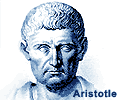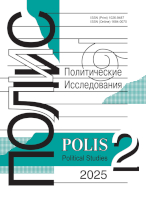The “enemy” and neutrality in Chinese caricatures
Balakina J.V.,
HSE University, Nizhny Novgorod, Russia, julianaumova@gmail.com
elibrary_id: 758525 | ORCID: 0000-0002-4942-5953 | RESEARCHER_ID: O-8009-2014
Article received: 2022.06.26. Accepted: 2023.01.11

DOI: 10.17976/jpps/2023.04.07
EDN: YMWVLA
Balakina J.V. The “enemy” and neutrality in Chinese caricatures. – Polis. Political Studies. 2023. No. 4. https://doi.org/10.17976/jpps/2023.04.07. EDN: YMWVLA
The timeliness of the present research is determined by the undying relevance of political cartoons and their considerable political potential. The military-political crisis caused by the start of the special military operation brought about growing uncertainty and made cartoons an effective means of explaining complex issues in a simple way to general public. In the study 63 political cartoons published in the Chinese online newspaper “Global Times” (the English version) between 24.02.2022 and 01.06.2022 were scrutinized. The study relies on the agenda-setting theory and dependency theory. The interdisciplinary classifier proposed by N. Radina was adapted to the objectives of the research and comprised the following components: the topic of the cartoons, their targets, recognition, the subject of discussion, the correlation of the verbal and visual parts of cartoons, the concentration of humor, metaphors, precedent texts, intertextuality, frames, linguistic features, the type of impact and intention. The results indicate that throughout the period, the foreign as well as domestic policy of the United States was the main focus of the cartoons despite the changing news agenda. Furthermore, the cartoons confirm the neutral position of official China, all the while condemning the conflict as such. The cartoons directly point to the culprit of the conflict employing all available visual and linguistic means, and also emphasize the negative assessment of the actions of the “enemy” via such frames as aggression, intervention and destructive behavior. Thus, it can be concluded that the main intention of the published cartoons was to convey to the foreign audience the following position in a fairly straightforward manner: China condemns both the US’s foreign policy and domestic policy, defining the country not only as an “enemy” of China, but also of other countries, and accusing “Uncle Sam” of fueling the conflict, and the geopolitical crisis. One of the limitations of this analysis is the inability to conduct a full-fledged quantitative analysis. As perspectives for further research, the ongoing comparison of the key meanings derived from the messages transmitted to the Chinese audience seems relevant.
References
Abdel-Raheem, A. (2017). Decoding images: toward a theory of pictorial framing. Discourse & Society, 28(4), 327-352. https://doi.org/10.1177/0957926517702978
Ball-Rokeach, S., & Defleur, M. (1976). A dependency model of mass-media effects. Communication Research, 3(1), 3-21. https://doi.org/10.1177/009365027600300101
Barthes, R. (1977). The photographic message. In Barthes, R., Image-Music-Text (pp. 15-41). London: Fontana.
Borjabad, S.A.F., & Ruiz del Olmo, F.J. (2020). Arab political cartoons and Facebook: Nadia Khiari, Ali Ferzat and Mohammed Sabaaneh. Journal of Communication Inquiry, 45(3), 244-266. https://doi.org/10.1177/0196859920977115
Calogero, R., & Mullen, B. (2008). About face: facial prominence of George W. Bush in political cartoons as a function of war. The Leadership Quarterly, 19(1), 107-116. https://doi.org/10.1016/j.leaqua.2007.12.007
Chan, A. (2007). Guiding public opinion through social agenda-setting: China's media policy since the 1990s. Journal of Contemporary China, 16(53), 547-559. https://doi.org/10.1080/10670560701562267
Chen, K.W., Phiddian, R., & Stewart, R. (2017). Towards a discipline of political cartoon studies: mapping the field. In J. Milner Davis (Ed.), Satire and Politics. Palgrave Studies in Comedy (pp. 125-162). Cham: Palgrave Macmillan. http://dx.doi.org/10.1007/978-3-319-56774-7_5
Chikaipa, V. (2019). Caring mother or weak politician? A semiotic analysis of editorial cartoon representations of president Joyce Banda in Malawian newspapers. Critical Arts, 33(2), 14-28. https://doi.org/10.1080/02560046.2019.1655583
Chu, Y. (2021). Politics of visual discourse in China: the corruption cartoon. Visual Communication. https://doi.org/10.1177/14703572211058822
Conners, J.L. (2017). Party animals of the 2016 presidential primaries: political cartoon representations of the Republican and Democratic parties. American Behavioral Scientist, 61(6), 600-610. https://doi.org/10.1177/0002764217722249
Fauconnier, G., & Turner, M. (1998). Conceptual integration networks. Cognitive Science, 22(2), 133-187. https://doi.org/10.1207/s15516709cog2202_1
Fillmore, C.J. (1985). Frames and the semantics of understanding. Quaderni di Semantica, 6, 222–254.
Genova, D. (2018). Grasping political cartoons? Not an easy matter. European Journal of Humour Research, 6(1), 85-99. https://doi.org/10.7592/EJHR2018.6.1.genova
Halliday, M.A. (1973). Explorations in the functions of language. London: Edward Arnold.
Kress, G., & van Leeuwen, T. (1996). Reading images: the grammar of visual design. London: Routledge.
Kress, G., & van Leeuwen, T. (2001). Multimodal discourse: the modes and media of contemporary communication. London: Edward Arnold Publ.
Krstić, A., Aiello, G., & Vladisavljević, N. (2020). Visual metaphor and authoritarianism in Serbian political cartoons. Media, War & Conflict, 13(1), 27-49. http://dx.doi.org/10.1177/1750635219856549
Kuipers, G. (2011). The politics of humour in the public sphere: cartoons, power and modernity in the first transnational humour scandal. European Journal of Cultural Studies, 14(1), 63-80. http://dx.doi.org/10.1177/1367549410370072
Kwon, I. (2019). Conceptual mappings in political cartoons: a comparative study of the case of nuclear crises in US–North Korean relations. Journal of Pragmatics, 143, 10-27. http://dx.doi.org/10.1016/j.pragma.2019.01.021
Lakoff, G., & Johnson, M. (1980). Metaphors we live by. Chicago: University of Chicago Press.
Lakoff, G. (2008). Women, fire, and dangerous things: what categories reveal about the mind. Chicago: University of Chicago Press.
Lennon, H.W., & Kilby, L. (2020). A multimodal discourse analysis of ‘Brexit’: flagging the nation in political cartoons. In M.A. Demasi, S. Burke, & C. Tileagă (Ed.), Political Communication. Palgrave Studies in Discursive Psychology (pp.115-146). Cham: Palgrave Macmillan.
Lin, C.A., & Lagoe, C. (2013). Effects of news media and interpersonal interactions on H1N1 risk perception and vaccination intent. Communication Research Reports, 30, 127-136. http://dx.doi.org/10.1080/08824096.2012.762907
McCombs, M., & Shaw, D. (1972). The agenda-setting function of mass media. Public Opinion Quarterly, 36, 176-187. https://doi.org/10.1086/267990
Moore, M., & Colley, T. (2022) Two international propaganda models: comparing RT and CGTN’s 2020 US ELECTION COVERAGE. Journalism Practice. https://doi.org/10.1080/17512786.2022.2086157
Neuberger, L., & Kremar, M. (2008). Exploring the Effects of Editorial Cartoons on Attitude Change: An Experimental Analysis. Presentation at the Annual convention of the International communication association], Montreal, Canada.
Olesen, T. (2009). The Muhammad cartoons conflict and transnational activism. Ethnicities, 9(3), 409-426. http://doi.org/10.1177/1468796809337432
Samson, A. C., & Huber, O. (2007). The interaction of cartoonist’s gender and formal features of cartoons. Humor-International Journal of Humor Research, 20(1), 1-25. http://dx.doi.org/10.1515/HUMOR.2007.001
Sani, I., Abdullah, M.H., Abdullah, F.S., & Mohamad Ali, A. (2012). Political cartoons as a vehicle of setting social agenda: the newspaper example. Asian Social Science, 8(6), 156-164. http://dx.doi.org/10.5539/ass.v8n6p156
Sanina, A. (2019). Who are you kidding? Visual political irony in contemporary Russia. Qualitative Inquiry, 25(4), 432-444. http://dx.doi.org/10.1177/1077800418790292
Soroka, S., Daku, M., Hiaeshutter-Rice, D., Guggenheim, L., & Pasek, J. (2018). Negativity and positivity biases in economic news coverage: traditional versus social media. Communication Research, 45(7), 1078-1098. http://dx.doi.org/10.1177/0093650217725870
Sperber, D., & Wilson D. (1995). Relevance theory: communication and cognition. 2nd ed. Oxford: Blackwell.
Tsakona, V. (2009). Language and image interaction in cartoons: towards a multimodal theory of humor. Journal of Pragmatics, 41(6), 1171-1188. http://dx.doi.org/10.1016/j.pragma.2008.12.003
Wetherly, P. (2012). Freedom of expression, multiculturalism and the ‘Danish cartoons’. In M. Farrar, S. Robinson, Y. Valli, P. Wetherly (Ed.), Islam in the West (pp. 36-55). London: Palgrave Macmillan.
Yingchi, C. (2020). On the hypoiconic structure of cartoons. Social Semiotics, 32(2), 262-278. http://dx.doi.org/10.1080/10350330.2020.1756587
Zhang, C. (2021). The Sino–US trade war in political cartoons: a synthesis of semiotic, cognitive, and cultural perspectives. Intercultural Pragmatics, 18(4), 469-497. https://doi.org/10.1515/ip-2021-4003
Zhirnova, L.S. (2021). Russia and other significant others in Latvian caricatures. Galactica Media: Journal of Media Studies, 3(3), 199-212. http://dx.doi.org/10.46539/gmd.v3i3.196
Zou, S. (2021). Restyling propaganda: popularized party press and the making of soft propaganda in China. Information, Communication & Society, 26(1), 201-217. https://doi.org/10.1080/1369118X.2021.1942954
Beidina, T.E. & Makarova, Y.O. (2014). National features of propaganda activities in the People’s Republic of China. The Bulletin of Irkutsk State University. Series Political Science and Religion Studies, 8, 41-46. (In Russ.)
Churashova, E.A. (2012). Russian-Georgian conflict in pictures: analysis of accusatory discourse of Western caricatures. Vestnik NSUEM, 2, 191-199. (In Russ.)
Denisova, G.L. (2021). Representation of the concept aggressor’s defeat in cartoons of the Great Patriotic War. Tomsk State University Journal of Philosophy, Sociology and Political Science, 61, 204-215. (In Russ.) https://doi.org/10.17223/1998863X/61/21
Ipeeva, A.A. (2022). The image of Japan in the Soviet caricature during the Japanese invasion of Manchuria in the early 1930s (based on the materials of the “Soviet Siberia” newspaper). Japanese Studies in Russia, 1, 20-37. (In Russ.) https://doi.org/10.24412/2500-2872-2022-1-20-37
Ivanova, Е.A. (2018). The image of modern Europe in a political cartoon. Political linguistics, 4(70), 77-86. (In Russ.) https://doi.org/10.26170/pl18-04-08
Lebedeva, I.V. (2021). German carnival – uncensored political elite. Issues in Elitology, 2(4), 85-97. (In Russ.) https://doi.org/10.46539/elit.v2i4.86
Melnikov, S.S. (2018). In-group and out-group in Russian political cartoons: research of the latent meanings of narrative conflict between Russia and the West. Polis. Political Studies, 2, 100-114. (In Russ.) https://doi.org/10.17976/jpps/2018.02.08
Petrova, A.V., & Petrov, M.A. (2019). Complex method of analysis of metaphors in cartoon as a creolized text of political propaganda. Political linguistics, 5, 97-104. (In Russ.) https://doi.org/10.26170/pl19-05-10
Radina, N.K. (2021). Interdisciplinary classifier for quantitative media research based on political cartoons. Mediascope, 3. (In Russ.) https://doi.org/10.30547/mediascope.3.2021.8
Rogozinnikova, Yu.V. (2018). The images of the presidents of Russia and the United States in a political cartoon. Political linguistics, 2, 87-100. (In Russ.) https://doi.org/10.26170/pl18-02-11
Shustrova, E.V. (2015). Crimea joining Russia: American political cartoon reflection. Political linguistics, 1, 66-73. (In Russ.)
Sultieva, L. (2021). Images of the world's political elites in modern political caricature. The Caspian Region: Politics, Economics, Culture, 2, 117-123. (In Russ.) https://doi.org/10.21672/1818-510X-2021-67-2-117-123
Verbitskaya, O.Yu. (2017). An analysis of the political information in the American mass media: a modern image of Russia. Theories and Problems of Political Studies, 6(1А), 39-47. (In Russ.)
See also:
Radina N.K.,
“Imagined Geopolitics” in the Russian Media Discourse on Coronavirus. – Polis. Political Studies. 2021. No1
Pishcheva T.N., Vinogradova N.S., Nedova A.D.,
The image of Russia through prisms of political communications. – Polis. Political Studies. 2010. No4
Melnikov S.S.,
In-Group and Out-Group in Russian Political Cartoons: Research of the Latent Meanings of Narrative Conflict between Russia and the West. – Polis. Political Studies. 2018. No2
Rozov N.S.,
The specificity of «russian power» as determined by mental structures, by ritual practices, and by institutions. – Polis. Political Studies. 2011. No1
Tokarev A.A., Prikhodchenko A.Yu., Margoev A.R., Tseleshchev A.A.,
Chinese Foreign Policy Reflected in Images of the Present and the Future: Psychographic Method. – Polis. Political Studies. 2021. No1





.jpg)






 print
print
.jpg)
.jpg)